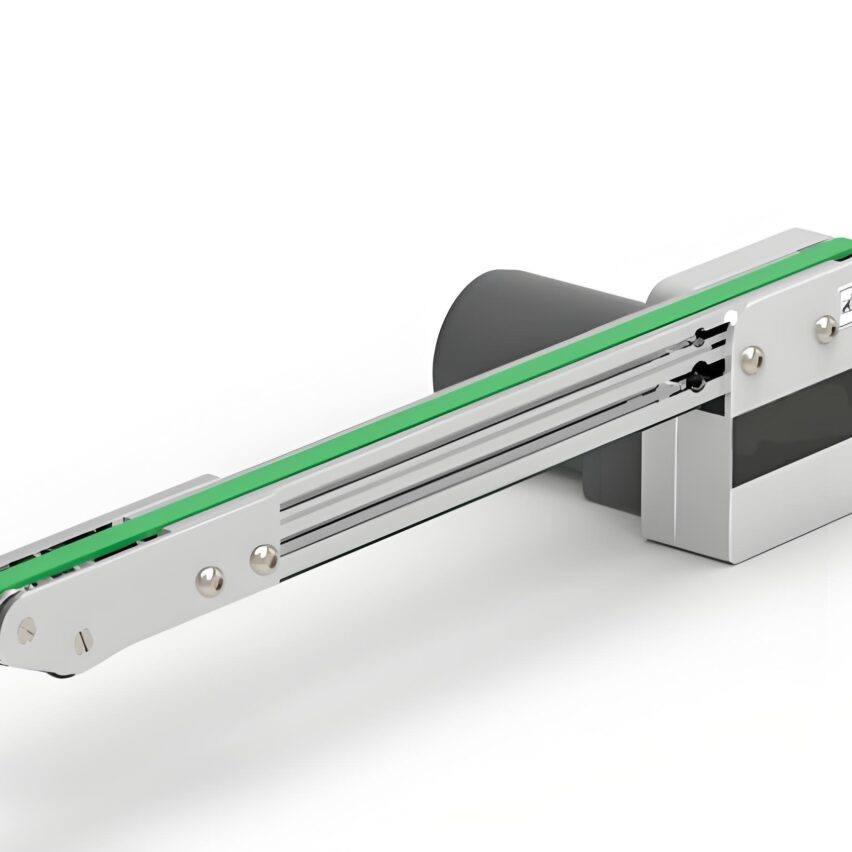How the hell does this thing turn?
Let's take it apart - there are just three components at the heart of a turning roller conveyor line.Drive roller(power source).Conical Roller(Steering key)support framework(for carrying heavy loads). Ordinary straight conveyor line rollers are straight, but the turning section must have conical rollers. Why? Imagine a group of people running in a circle hand in hand: those in the inner circle have small steps, those in the outer circle have big steps. That's what conical rollers do -Inside drum diameter is small, slow speed; outside diameter is large, fast speedThis is so that the inner and outer line speeds are automatically matched when the goods turn and are not crowded together.
The actual run is like this: the motor drives the drive roller through the chain or belt, and the conical roller set is arranged according to the angle. For example, 90 ° turn area, the roller will be lined up in a 1/4 arc, the goods go up, the inner roller slow and easy to turn, the outer roller whoosh run, naturally smooth cornering. Here is a hard indicator.Taper angle = arctan(drum width/2 x turning radius)The following is an example. An example: For a conveyor line with a width of 1 metre and a radius of 1.2 metres, the best anti-running effect is achieved when the taper angle is ≈ 2.4°.
How different is it used in different industries?
-
E-commerce warehouses: a game of "blitzkrieg"
A South China logistics centre uses a 180° three-tier turn line with upper level inbound, middle level sorting and lower level outbound. Key operations.Laser volume measurement of packages before they enter the bend and automatic grouping by the system--Small pieces go to the inner circle (radius 600mm), large boxes go to the outer circle (radius 1200mm). Speed open to 3m/s, sorting 20,000 pieces per hour, manual handling directly cut 70%. -
Automobile factories: the loss of the "iron lump"
The body chassis weighs half a tonne, and the normal conveyor line wobbles at the first turn. A car company programme.Double-layer carbon steel roller + hydraulic damping buffer.. The top layer conveys and the bottom layer does the emergency recycling track. Even tougher - the rollers are covered with polyurethane rubber (80 Shore D hardness), and there are zero collisions with metal parts when turning. This system has reduced the production line failure rate from an average of 8 to 1 per month. -
Food Workshop: Fighting the "Slippery Monster"
Bread factories are most afraid of dough sticking to the rollers. Solution.Food grade stainless steel drum + honeycomb hole design(Hole size 3mm). The dough contact surface is reduced by 60%, and the residue automatically falls into the lower crumb collection box. Even better, a hot air curtain is installed at the bend, with the temperature set at 65℃ - preventing the dough from condensing and sticking, and avoiding high temperature fermentation.
How to save yourself when you run off course? Old Driver Live Teaching
Scenario 1: Cardboard boxes always squeeze inwards
→ Check three places:
- Is the taper angle deviation more than 0.5° (take a protractor card roller)
- Outer drum wear (feel surface for pits)
- Insufficient drive motor speed difference (measure voltage difference between inside and outside)
Emergency programme: Increase the frequency of the outer inverter by 2 Hz for an immediate effect.
Scenario 2: Soft bag rolls over on a curve
→ Three insurance policies must be added:
- Physical Anti-Flip: Roller spacing reduced to 1/3 of the bag length (ensure a minimum of 3 roller bottoms)
- Dynamic deskew: 2 sets of photoelectric sensors per metre on bends, automatic speed reduction for deviations exceeding 5mm.
- The Ultimate Solution: Replacement of magnetic deflection roller, which sucks the packaging iron buckle by electromagnetic field (deflection force up to 200N)
Scenario 3: Cargo slipping during spiral climb
→ Remember the safety formula.Maximum lift angle θ≤15°(θ=arctan(height/arc length)). Case of a chemical plant: The angle of lift exceeded 18° when conveying drums of solvent, resulting in a series of rear-end collisions on a slope. Rectification programme:
- Drums changed to diamond-patterned surface (coefficient of friction increased from 0.2 to 0.45)
- Stoppers every 3 metres (pneumatic stopper lifting speed <0.1 sec)
- Climbing section speed mandatory speed limit 0.8m/s
Editor's view
The most profound lesson learnt after eight years of line design is this.Don't save money on the turning radius! Last year, a customer hard to 1.5 m long mould into the 900 mm radius line, saving 20,000 equipment costs, the result of monthly maintenance downtime loss of 120,000. The real reliable operation is: according to "cargo length × 1.2" radius selection, taper angle measured adjustment to ± 0.3 °, the key position roller reserved 20% power margin. Remember - turning line is not accessories, it is the production line of the "traffic conductor", the post to understand the whole, the efficiency of the entire line can jump high 30%.













